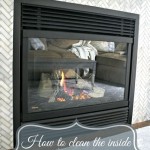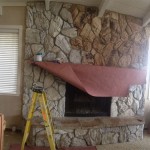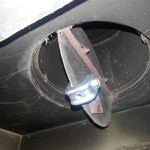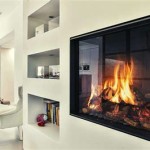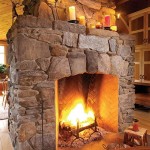Wood Stove Fireplace Inserts: Efficient Heating and Timeless Appeal
Wood stove fireplace inserts represent a significant upgrade for homeowners seeking to enhance the efficiency and functionality of existing masonry fireplaces. These inserts are self-contained heating units designed to be installed directly into the firebox of a traditional fireplace, transforming it from a typically inefficient, drafty structure into a powerful and controllable heat source. Unlike open fireplaces, which often lose more heat than they generate, wood stove inserts are engineered for optimal combustion and heat retention, offering a considerable improvement in heating performance and overall energy savings.
The allure of a wood-burning fireplace is undeniable, evoking feelings of warmth, comfort, and a connection to simpler times. However, traditional fireplaces are notorious for their poor energy efficiency. Much of the heat produced escapes up the chimney, and they can even draw warm air out of the room when not in use. Wood stove inserts address these shortcomings by providing a sealed combustion chamber, controlled airflow, and advanced catalytic or non-catalytic technologies, resulting in a significantly more effective and environmentally responsible heating solution.
Choosing the right wood stove fireplace insert involves careful consideration of several factors, including the size of the fireplace opening, the heating requirements of the space, the desired aesthetic, and local regulations regarding emissions. Understanding these factors is crucial to selecting an insert that will provide years of reliable and efficient heating while complementing the existing decor of the home.
Key Point 1: Understanding the Benefits of Using a Wood Stove Fireplace Insert
The advantages of utilizing a wood stove fireplace insert extend beyond mere aesthetics. The primary benefit lies in the increased heating efficiency compared to an open fireplace. Wood stove inserts are designed to maximize heat output and minimize heat loss. This is achieved through several design elements, including a sealed firebox, insulated walls, and a tightly fitted door. These features prevent the uncontrolled escape of heat up the chimney, allowing more of the generated warmth to radiate into the room.
Furthermore, many wood stove inserts incorporate advanced combustion technologies, such as catalytic or non-catalytic systems. Catalytic inserts utilize a catalytic combustor to burn off smoke and gases that would otherwise be released into the atmosphere. This process not only increases the efficiency of the burn but also reduces emissions, making the insert a more environmentally friendly option. Non-catalytic inserts achieve cleaner burning through careful engineering of the airflow and combustion chamber, ensuring a complete and efficient burn of the wood fuel.
Another notable benefit is the improved control over the heating process. Unlike an open fireplace, where the fire burns uncontrolled, a wood stove insert allows for precise regulation of the airflow. This control enables users to adjust the burn rate and heat output to match their specific needs, providing consistent and comfortable heating for extended periods. This regulation also contributes to more efficient fuel consumption, reducing the amount of wood required to maintain a desired temperature.
Beyond the functional advantages, wood stove inserts also enhance safety. The enclosed design minimizes the risk of sparks and embers escaping the firebox, reducing the potential for house fires. The insulated walls of the insert also protect the surrounding masonry from excessive heat, preventing damage to the fireplace structure. Many inserts also feature safety features such as automatic shut-off mechanisms in case of overheating or malfunction.
In summary, the benefits of wood stove fireplace inserts encompass improved heating efficiency, reduced emissions, enhanced control over the heating process, and increased safety. These advantages make them a compelling alternative to traditional fireplaces for homeowners seeking a more effective and responsible heating solution.
Key Point 2: Choosing the Right Wood Stove Fireplace Insert for Your Needs
Selecting the appropriate wood stove fireplace insert is a critical step in maximizing its performance and ensuring a proper fit within the existing fireplace. Accurate measurements of the fireplace opening are essential. Height, width, and depth must be carefully measured to ensure that the chosen insert will fit comfortably and securely within the firebox. Allowances should be made for adequate clearances around the insert for proper airflow and heat dissipation.
Another crucial consideration is the heating capacity of the insert. This is typically measured in British Thermal Units (BTUs) and should be determined based on the size of the area to be heated and the climate in which the home is located. A larger space or colder climate will require an insert with a higher BTU rating. Consulting with a qualified professional can help determine the appropriate BTU rating for specific heating needs.
The choice between catalytic and non-catalytic inserts is another important factor. Catalytic inserts generally offer higher efficiency and lower emissions, but they require more maintenance due to the potential for the catalytic combustor to degrade over time. Non-catalytic inserts are simpler in design and require less maintenance, but they may not be as efficient or environmentally friendly as their catalytic counterparts. The decision depends on individual preferences and priorities.
Aesthetic considerations also play a role in the selection process. Wood stove inserts are available in a variety of styles and finishes to complement different home decor. Options range from traditional cast-iron designs to more modern and contemporary styles. The appearance of the insert should be carefully considered to ensure that it integrates seamlessly into the existing fireplace and overall room design.
Finally, it is imperative to consider local regulations and building codes regarding wood-burning appliances. Many jurisdictions have restrictions on emissions and require permits for the installation of wood stove inserts. Compliance with these regulations is essential to ensure the safe and legal operation of the insert. Local authorities can provide information on specific requirements and permit procedures.
Key Point 3: Installation and Maintenance of Wood Stove Fireplace Inserts
Proper installation is paramount to the safe and efficient operation of a wood stove fireplace insert. While some experienced homeowners may attempt to install the insert themselves, it is generally recommended to hire a qualified professional installer. A professional will have the expertise and equipment necessary to ensure that the insert is installed correctly and in compliance with all applicable codes and regulations.
The installation process typically involves several steps, including preparing the fireplace opening, installing a chimney liner, connecting the insert to the chimney, and sealing the surrounding area. The chimney liner is a crucial component, as it provides a safe and effective passageway for exhaust gases to escape the home. A properly sized and installed chimney liner will prevent the buildup of creosote, a flammable substance that can lead to chimney fires.
Regular maintenance is essential to keep the wood stove insert operating at peak performance and to prevent potential problems. This includes cleaning the chimney at least once a year to remove creosote buildup. The frequency of cleaning may vary depending on the type of wood burned and the frequency of use. A professional chimney sweep can perform a thorough inspection and cleaning of the chimney.
Other routine maintenance tasks include inspecting the door seal for leaks, cleaning the glass window, and removing ashes from the firebox regularly. A tight door seal is essential to prevent air leaks and maintain efficient combustion. The glass window can be cleaned with a specialized glass cleaner designed for wood stoves. Ashes should be removed regularly to prevent them from accumulating and obstructing airflow.
For catalytic inserts, the catalytic combustor should be inspected periodically and replaced as needed. The lifespan of the combustor will vary depending on usage and the quality of the wood burned. Signs of a failing combustor include reduced heat output, increased smoke production, and visible damage to the combustor element.
By following these installation and maintenance guidelines, homeowners can ensure the safe, efficient, and long-lasting performance of their wood stove fireplace insert. Regular upkeep will not only prolong the life of the insert but also minimize the risk of problems and ensure a comfortable and enjoyable heating experience.
Wood stove fireplace inserts offer a practical and aesthetically pleasing solution for homeowners looking to improve their heating efficiency and enjoy the ambiance of a wood-burning fire. By carefully considering the factors outlined above and following proper installation and maintenance procedures, homeowners can reap the many benefits of these efficient and versatile heating appliances.

Napoleon Epi3 Wood Fireplace Insert Inserts By Rockford Chimney

Wood Burning Fireplace Inserts Insert Installation

Lopi Premium Wood Fireplace Inserts Custom Hearth Fireplaces And Stoves

Why A Wood Burning Fireplace Insert Bethesda Md Service

Ventis Hei240 Wood Burning Insert Rockford Chimney

Wood Inserts We Love Fire

What S Best A Fireplace Stove Or Insert We Love Fire

T25i Timberwolf Wood Fireplace Insert Hearth Stove Patio

Should I Use A Fireplace Insert Or Wood Stove To Heat Up My Home

We Install Fireplaces Inserts And Stoves Top Fireplace Brands
Related Posts


